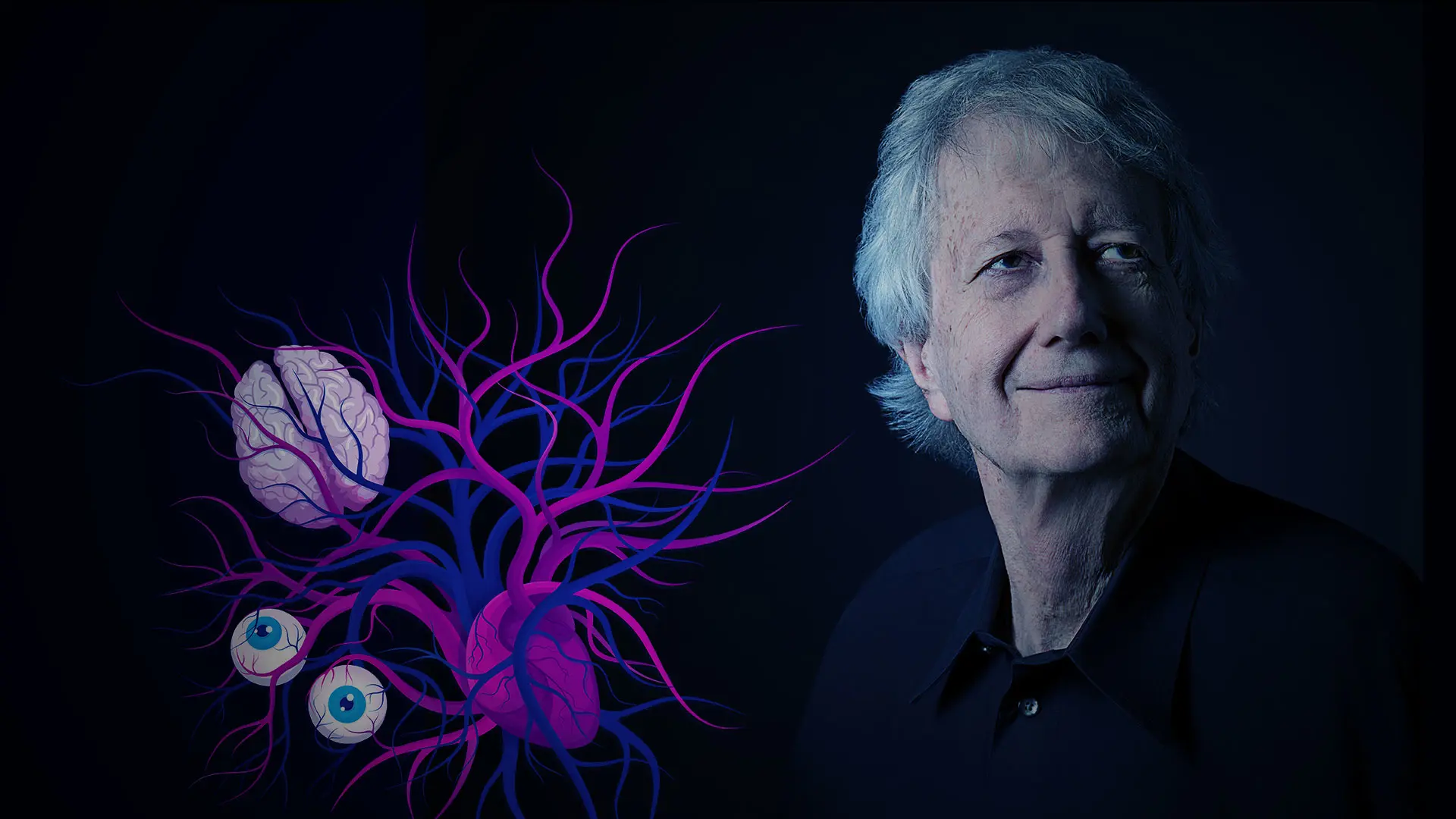As New York Eye and Ear Infirmary of Mount Sinai (NYEE) increasingly focuses on ocular health at the population level, no research takes on greater importance than that of R. Theodore Smith, MD, PhD, Professor of Ophthalmology at the Icahn School of Medicine at Mount Sinai, who has established an indelible pathway between high-risk cardiovascular disease and age-related macular degeneration (AMD).
By expanding that knowledge in two recently published studies, Dr. Smith hopes to set the stage for large-scale screening programs that could involve ophthalmologists, cardiologists, and primary care physicians cross-testing for potentially life-threatening heart disease as well as AMD, the leading cause of blindness.
“Screening for vascular diseases through inexpensive retinal imaging could make a significant contribution to public health and save lives,” says Dr. Smith, Director of Biomolecular Retinal Imaging at NYEE. “Likewise, screening patients with known cardiac abnormalities for unrecognized AMD could lead to early diagnosis and potentially sight-saving treatment.”
Dr. Smith’s latest findings demonstrate that two distinct disease pathways—drusen beneath the retinal pigment epithelium and subretinal drusenoid deposits (SDDs) above it—may contribute to early AMD, but that only a single pathway identified on retinal imaging, SDD, can be linked to high-risk vascular disease. In one of those studies, published in November 2022 in BMJ Open Ophthalmology, Dr. Smith’s team looks at a larger patient population than in previous studies to identify specific forms of heart disease—including cardiac valve and myocardial defects, and stroke/transient ischemic attack—that are associated with SDDs.
“What these diseases have in common is diminished circulation, or blood flow, to the eye,” explains Dr. Smith, the study’s senior author. “The carotid artery is a good example. We’ve demonstrated how a plaque obstruction to flow in the carotid artery produces SDDs on the same side of the blockage—a strong proof of principle that reduced blood flow to the eye is the cause of SDDs. In addition to ocular damage, the plaque blockage can also cause stroke.”
“Screening for vascular diseases through inexpensive retinal imaging could make a significant contribution to public health and save lives.”
- R. Theodore Smith, MD, PhD
These breakthrough findings were presented by Dr. Smith at the American Society of Retina Specialists’ annual meeting at the end of July. Another discovery from his body of work—done in collaboration with the stroke and cardiovascular medical teams at Mount Sinai—was that a heart valve defect (such as mitral or aortic) could also result in reduced cardiac output and restricted blood flow to the eye, along with the formation of SDDs. This is the first known association of cardiac valve disease and AMD.
In the second study, which appeared in January 2023 in the journal Eye, the team further elucidated the separate drusen and subretinal drusenoid deposit pathways through quantitative autofluorescence, a powerful indicator and classifier of outer retinal pathology.
Using ultra-sensitive detectors to study 18 patients with the “dry” form of advanced AMD, scientists learned that the dim fluorescent light emitted in the advanced stages caused by SDDs was consistently twice as bright as those caused by drusen. Combined with prior research, this discovery provides conclusive evidence that two different disease processes occur in AMD, one driven by drusen and the other by SDDs. The drusen process leads to darker fluorescence in the advanced stage, while the SDD process leads to brighter fluorescence, the study reported.
“The good news for patients and ophthalmologists is that both forms of AMD can be identified through standard retinal imaging,” notes Dr. Smith. “That could make it feasible to put an optical coherence tomography machine in a primary care clinic and quickly and inexpensively learn if a patient has drusen or SDDs—critical knowledge for the treatment of AMD. If the scan shows SDDs, the patient could also be warned by the physician that they may have an undetected and potentially life-threatening heart condition that needs to be evaluated and treated. This is particularly important information for women and underserved populations whose cardiac symptoms are frequently ignored.”
